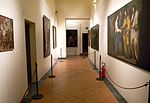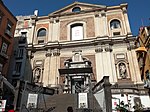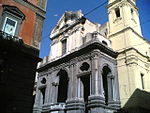Naples Cathedral
14th-century Roman Catholic church buildings in ItalyBasilica churches in NaplesBurial places of popesBurial sites of the Capetian House of AnjouCathedrals in Campania ... and 2 more
Gothic architecture in NaplesRoman Catholic cathedrals in Italy

The Naples Cathedral (Italian: Duomo di Napoli; Neapolitan: Viscuvato 'e Napule), or Cathedral of the Assumption of Mary (Italian: Cattedrale di Santa Maria Assunta), is a Roman Catholic cathedral, the main church of Naples, southern Italy, and the seat of the Archbishop of Naples. It is widely known as the Cattedrale di San Gennaro (Cathedral of Saint Januarius), in honour of the city's patron saint.
Excerpt from the Wikipedia article Naples Cathedral (License: CC BY-SA 3.0, Authors, Images).Naples Cathedral
Piazza Sisto Riario Sforza, Naples San Lorenzo
Geographical coordinates (GPS) Address External links Nearby Places Show on map
Geographical coordinates (GPS)
| Latitude | Longitude |
|---|---|
| N 40.8525 ° | E 14.2596 ° |
Address
Cattedrale di Santa Maria Assunta (Duomo)
Piazza Sisto Riario Sforza
80138 Naples, San Lorenzo
Campania, Italy
Open on Google Maps











